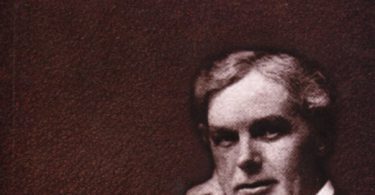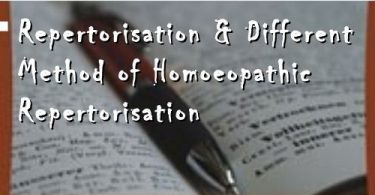Abstract: Dreams have different aspects which is discussed here, especially the aspect which we can adopt for using “dreams” of the patient for artistic prescription in Homoeopathy.
Introduction
Homoeopathy as a scientific system of therapeutics based on identifying the individual as an entity and selecting the similimum according to the characteristics on the basis of art. In homoeopathy each individual is considered as a distinct entity with certain characteristics of his/her own and based on these characteristics we choose from an identical medicinal picture-a Remedy.
Every individual have their own way of thinking , reflexes, emotions, expressions, built, desires, aversions, likes, dislikes, hobbies, thermal reactions, dreams etc. To individualize the patient as a person we enter a new world, every time we take a case, we as an unprejudiced observer try our best to know our patients at their physical as well as mental level. This process includes an important query –Dreams of the patient. We will discuss this topic in this article.
ORIGIN
The word “dream” is traditionally traced back to 13th century word “dreme” (Anglo-Saxon), which means joy, gladness or mirth. However, the word “dream” more likely came from Sanskrit, means-deception.
WHAT IS DREAM
Dreams are successions of images, ideas, emotions and sensations that occur involuntary in the mind during certain stages of sleep.
According to Oxford English dictionary –“Dream is a series of images and feelings occurring in a person’s mind during sleep.”
According to Merriam – Webster’s Medical Desk Dictionary “Dreams is a series of thoughts images or emotions occurring during sleep and especially during REM sleep.
PHYSIOLOGY OF DREAM
Since the early 20th century, human sleep has been described as a succession of five recurring stages- four non-REM stages and one REM stage. A sixth stage, waking, is often included.REM is a highest dreaming stage of sleep. REM- sleep (stage 5 sleep) – It is distinguished from NREM sleep by changes in Physiological states, including its characteristic rapid eye movements. Intense dreaming occurs during REM sleep as a result of heightened cerebral activity. The first REM sleep typically lasts for 10 minutes, with each recurring REM stage lengthening, and the final one lasting an hour.
A study published in 1998 in the Science was the first to show that the portion of brain that controls emotions, senses and long term memory is most active during the dream states. The study showed that dreaming is linked to emotion.
THEORIES OF DREAMS
Theories of dreaming have varied widely over time and across cultures. There exist many theories of dreams out of which following are important-
1. The supernatural theory of dreams.
2. The physiological theory of dreams.
3. Psycho-neurological interpretation of dreams.
4. Psycho-analytical interpretation of dreams.
i. Freud’s theory of dreams.
ii. Adler’s theory of dreams.
iii. Jung’s theory of dreams.
5. Pearl’s theory of dreams.
6. Activation-synthesis theory of dreams.
7. Mark Solm’s theory of dreams.
8. Jie Zhang’s Continual-activation theory of dreams.
Freud’s psycho-analytic theory of dreams stands as the most valid and fundamental among all the theories of dreams. Sigmund Freud (1856 –1939) was an Austrian neurologist who became known as the founding father of psychoanalysis. Freud was the first person to state that we sleep because of dreams which is contrary to the general belief that people cannot sleep because of their dreams.
In the year 76-77, Allan Hobson and Robert McCarley disregarded the Fruedian view of dream as subconscious wishes. They proposed a neurobiological theory of dream which is known as “Activation-synthesis theory of dream”. Dream is produced by the activated forebrain out of this internally generated information. This theory answers all the questions about the meaning of dreams by the simple means of announcing them meaningless. They also denied that dreams have meaning or are related to our real world environment.
Anyhow, this theory was very much criticized by various dream experts. Hence Hobson submitted a modified version of this theory acknowledging that dreams do reflect past memories, fears, hopes and desires.
SCOPE OF DREAMS IN HOMOEOPATHIC PRESCRIBING
In homoeopathic prescribing, we can employ dreams in commonly two ways-
[A] As one of the prescribing symptoms.
[B] As pointers to reach psyche of the patient-by dream interpretation.
[A] AS ONE OF THE PRESCRIBING SYMPTOM
• We can use dream as a one of the prescribing symptom by matching it with our homoeopathic materia medica and/or repertory. For e.g.–
FROM THE REPERTORY(The Essential Synthesis)
Dreams-Snakes-alum arg-met Arg-n bell bov carc cench colch daph grat hyos indol iris kali-c kalm Lac-c lach med merl op pitu-a ptel pycnop-sa Ran-b Ran-s rat sep sil sol-ni sphing spig tab teucr teucr-s tub
–biting him:bov cench med pert-vc
–horrifying:Arg-n
–python:rosm
· throwing her into a pool full of caimans: rosm
FROM THE REPERTORY (The Essential Synthesis)
Dreams-Falling:Bell,Thuja,Am-m,Cact,Dig,Guaj,Hep,Kreos,Merc,Puls,Sars,Sulph,acon,allox,alum,alum-p,ange-s,aur,bism,cain,calc,canth,caps,chel,chin,cimic,cob-n,dulc,elaps,eupi,ferr,ferr-p,hell,ign,kali-c,kali-i,kali-n,kali-n,kali-p,m-arct,mag-m,mez,nat-s,nicc,nux-m,nux-v,op,ph-ac,phos,plb,rumx,sabad,sabin,sang,sep,sol-t-ae,sumb,tab,zinc,zinc-o,zinc-p.
FROM THE REPERTORY (The Essential Synthesis)
Dreams-Urinating:am-br bell Kreos lac-c lyc merc-i-f pycnop-sa sapin Seneg Sep sulph
-chamber pot;into the:sep sulph
-Desire for:kali-n kreos merc-i-f`
-strangury;he had an attack of:chr-ac
FROM THE REPERTORY (The Essential Synthesis)
Dreams-Business:Nux-v, Rhus-t, Bry, Chel, cur, Lach, Lyc, Puls, Sil, Sulph, aether, anac, apis, arist –m,asaf,bell,bufo,calc,calc-act,calc-sil,camph,canth,carb-v,carc,carl,celt,cic,cina,cinnb,croc,elaps,gels,hep,hura,hyper,kali-c,merc,myris,phos,psor,pyrog,sang,sars,sel,staph,tarent.
[B] AS POINTERS TO REACH PSYCHE OF THE PATIENT – BY DREAM INTERPRETATION
DREAM INTERPRETATION
• Dream Interpretation is the process of assigning meaning to dreams.
The second use of dreams involves drawing out mental attributes from the raw dreams reports.
In § 98.
• Our master Hahnemann say, “. . . . the investigation of the true, complete picture and its peculiarities demands especial circumspection, tact, knowledge of human nature, caution in conducting the inquiry and patience in an eminent degree.”
Dr Robert Gibson Miller (1862-1919)
• According to Dr. Miller, “effects of sleep and dreams can be taken as general symptoms” Dr. Miller says, “again how often has the study of the dreams revealed the hidden key to the remedy.”
Sigmund Freud (1856-1939)
“Dreams are the royal road to the unconscious” as stated by psychotherapist Sigmund Freud.
RECENT DREAM RESEARCH
Adam Schneider and G. William Domhoff of University of California, Santa Cruz. are doing quantitative study of dreams. The idea they use was developed by psychologist Calvin S. Hall on the basis of thousands of dream reports he collected at Case Western Reserve University in Cleveland, Ohio, in the 1940’s.
The International Institute for Dream Research receives e-mails about dreams from around the globe, including Africa, India, Europe, North and South America, China and Australia. They are doing cross-cultural studies of dreaming.
Being that it is prone to error and speculation, dream interpretation has to be done skilfully and carefully.
WHY WE SHOULD INTERPRET DREAMS IN HOMOEOPATHY?
Don’t you think we should use our every knowledge to choose the correct remedy (similimum) ? Yes, dream interpretation can give us clue about the similimum, although it is not an easy task but dream interpretation, if correctly handled, can help homoeopathic physician in following ways-
1. Dreams can be used to understand the patient’s current mental status because peoples are frequently unaware of aspects of their psyche, fears and delusions and they are often revealed on through dreams, especially in case of children.
2.Dreams can further be exploited as starting points for drawing out psychological material that the patient is aware of yet does not wish or is unable to reveal directly ,especially in case of female patient mostly due to modesty.
3. From their dream reports patients can be led rather craftily to reveal aspects of their persona that which they incorrectly consider irrelevant for the homeopathic interview.
4. Using dream interpretation can enables us to understand the patient’s state even in an uncooperative patient.
5. The importance of dream interpretation lies in the fact that much of the conscious reporting of the patient is based on his or her compensated state. Compensation involves the funnelling of thoughts and behavioural impulses that are inappropriate to the situation toward more productive or socially acceptable outcomes.
Finally the last, but not the least thing that after dream interpretation, we should confirm it in the patient that it is true for that particular case. Dream can be a most-reliable gateway to the psyche, when correctly handled; dreams offer a precise view of the hidden dynamics that motivate the patient’s life, frequently leading to a correspondingly precise diagnosis of patient’s state and prescription.
Unconscious refers to the mental processes of which individuals make themselves unaware, the significant psychic events takes place in unconscious level, these events have both symbolic and actual significant.
CONCLUSION
Dream interpretation can be successfully used in prescribing in homoeopathy, if correctly handled. As a physician, dream will help us to know the person and his feelings, his conflicts, his association as well as his subtle expression.
ACKNOWLEDGEMENT
I am very thankful to my respected guide Prof. LM. .Khan M.D. (Hom.), Ex- H.O.D., Department of Organon of Medicine, National Institute of Homoeopathy, Kolkata (W.B.), for his guidance at every step during preparation of this article.
I am very thankful to In-charge Dr. Subhas Singh, Department of Organon of Medicine, National Institute of Homoeopathy, Kolkata (W.B.), for his support and inspiration during preparation of this article.
References
1. Furnham A. 50 Psychological Ideas you really need to know. First edition.London: Quercus Publishing Plc. 2008.
2. Misra BB. Textbook of Psychology for Homoeopathic Students. First edition. New Delhi B. Jain Publishers (P) Ltd. 2010.
3. Jung C.G. Man and his Symbols. Dell Publishing, a division of Random House, Inc.1968.
4. Kaur S. A Concise Textbook of Human Psychology. New Delhi. B. Jain Publishers (P) Ltd.
5. S Freud. The Interpretation of Dreams. First edition New York. Avon book. 1965.
6. Craze R. The Dictionary of Dreams and their Meanings. London. Hermes House publishing Ltd.
7. Schroyens F. The Essential Synthesis. New Delhi. B. Jain Publishers (P) Ltd.
8. Ganong W.F. Review of Medical Physiology. The McGraw-Hill Companies.
9. Internet sources- En.wikipedia.org assessed on 08/06/14
10. Internet sources -Hpathy.com retrieved on 08/06/14
11. Internet sources -www.homeorizon.com assessed on 08/06/14
12. Internet sources- assessed on 08/06/14
13. Internet sources -http://www.homeopathyzone.com/blog/article/why-dreams-are-valuable-in-homeopathic-diagnosis-and-treatmenton assessed on 08/06/14





